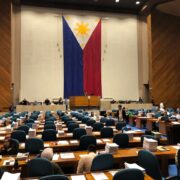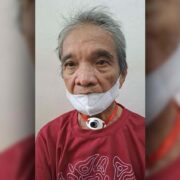Leadership fund vs. insertions (1)

Ever wonder how a solon can easily get P1 billion in congressional pork barrel per year?
As the Senate resumes its investigation into substandard and ghost flood control projects that have been blamed for the widespread flooding in our country, it would be worthwhile to highlight what former Department of Public Works and Highways (DPWH) Secretary Manuel Bonoan inadvertently admitted to all and sundry on Sept. 23: that a regular House member can get an “average” of P1 billion in public works allocations every year.
The allocations are tucked away in a so-called “leadership fund” that Bonoan and the Department of Budget and Management have created to accommodate requests for infrastructure funding, primarily from legislators. Heretofore unknown to the public and even some senators, this lump sum fund has been included in the preparations for the proposed National Expenditure Program (NEP) submitted by the DBM to Congress annually.
“Allocable.” The leadership fund is included in the 50 percent budget ceiling for “legislative allocable” funds, which can be allocated to the priority projects of members of the House of Representatives and the Senate. According to former DPWH Undersecretary Catalina Cabral, if the budget ceiling for DPWH in the NEP is P900 billion, “around half of it” (P450 billion) is “allocable.”
“In the preparation of the NEP, I think we consolidate all the requests and proposals,” said Bonoan, telling members of the Senate blue ribbon committee (BRC) during the Sept. 23 hearing that “we call it leadership fund in order that if there are actually priority projects that may be requested by members of the Senate, this is where we’re going to include it in the National Expenditure Program.”
A bewildered Sen. Panfilo Lacson, chair of the BRC, asked how legislators could already insert funding for their proposed projects in the NEP, which is the list of projects under the President’s proposed budget, even though it had not yet been submitted to Congress.
To which Bonoan retorted: “We don’t really call it insertion, we call it consolidation for the time being … So, this is consolidating all the requests from all sectors like the Senate, Congress, and everything.”
Under questioning by Sen. Rodante Marcoleta, Bonoan disclosed that the funds could be accessed by any district member of the House and Senate—around P1 billion on average—but party list representatives are limited to P160 million each.
Thus, if a dynastic political family has at least three of its members as lawmakers, that lone family would have a total of P3 billion in leadership funds—that, for all intents and purposes, are pork barrel funds—per year. Let that sink in, dear reader. The same family would have been allotted P9 billion by the time its members sought reelection three years later. No wonder, in this country, dynastic families continue to rule everywhere you look, and chances for challengers to get elected are slim, if not almost nil.
Lacson himself revealed that the 24-member higher chamber inserted as much as P100 billion in the 2025 General Appropriations Act passed last year, although an earlier figure placed the total amount at P142 billion (made during the bicameral conference deliberations on the budget). While insertions by lawmakers are not necessarily illegal, Lacson found them “questionable, especially when individual insertions reach P5 billion or even P9 billion.” (see “Lacson: At least P100 billion in senators’ insertions in 2025 budget,” 9/28/25).
That revelation, along with seemingly unfounded complaints about how he was handling the inquiry, rubbed a few of his colleagues the wrong way, or so it seemed. He had to resign from his chairmanship of the BRC on Oct. 5. However, all is well that ends well, as he reassumed his post last Monday. Nobody seems to have the stamina to replace him from the ranks of the Senate majority.
Allocation for kickbacks. What is wrong with a legislator having a say in allocating P1 billion in annual infrastructure funds? It could raise serious ethical and moral concerns for lawmakers to interfere with the utilization of taxpayer money that should be handled by the executive department. The more important issue was highlighted by Brice Hernandez, former assistant district engineer of DPWH Bulacan’s 1st District: only 25 to 30 percent of the project cost is allocated for the actual implementation of flood control projects, while the going rate for DPWH’s building and road projects ranges from 45 to 50 percent. The rest goes to kickbacks, with the project proponent—either a House member or senator—potentially getting as much as 25 percent.
Thus, if the 25 percent kickback scheme is followed religiously, a P1 billion leadership fund translates to P250 million per year or P750 million per congressional term for a corrupt lawmaker. If these officials allow their own construction companies to secretly undertake the project (either through dummy companies or subcontracting), it would be easy for them to double their kickbacks.
(To be continued.)
—————-
lim.mike04@gmail.com


















